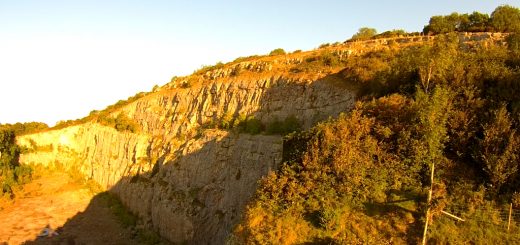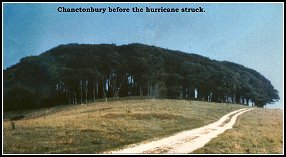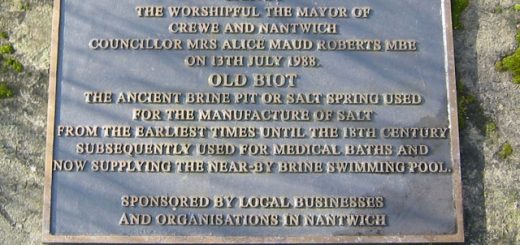Arbor Low Stone Circle
Arbor Low is one of the most important prehistoric sites in Derbyshire. Surrounded by unspoiled countryside with fantastic views over classic Derbyshire scenery, it is not hard to image that one is thousands of miles away from the hubbub of modern life.
Arbor Low is one of the most important prehistoric sites in Derbyshire. Surrounded by unspoiled countryside with fantastic views over classic Derbyshire scenery, it is not hard to image that one is thousands of miles away from the hubbub of modern life.
The site is similar in some ways to Stonehenge and Avebury in Wiltshire, and is easily as important and unique, it is probably for this reason that it has sometimes been referred to as the ‘Stonehenge of the Peak District’.
 The site consists of a high circular bank, enclosing a partially silted ditch, which in turn encloses a flat plateau. Within this flattened area is a recumbent stone circle of white weathered limestone blocks, resembling the fallen corroded teeth of an ancient titan. In the centre of the circle is a group of four stones, which may be the remains of a cove. This unique arrangement has led some people to describe the circle as resembling a clock face, especially when seen from above. It is not known whether the stones were ever in an upright position, and archaeological evidence has been inconclusive (no socket holes have ever been discovered).
The site consists of a high circular bank, enclosing a partially silted ditch, which in turn encloses a flat plateau. Within this flattened area is a recumbent stone circle of white weathered limestone blocks, resembling the fallen corroded teeth of an ancient titan. In the centre of the circle is a group of four stones, which may be the remains of a cove. This unique arrangement has led some people to describe the circle as resembling a clock face, especially when seen from above. It is not known whether the stones were ever in an upright position, and archaeological evidence has been inconclusive (no socket holes have ever been discovered).
 There are two gaps within the outer bank, one in the Northwest, and one in the Southeast, which may have served as entrances and exits; perhaps as part of a ceremonial approach and departure of the site. There is also an earthwork leading from the site near the Southeast entrance, the purpose of which is unknown.
There are two gaps within the outer bank, one in the Northwest, and one in the Southeast, which may have served as entrances and exits; perhaps as part of a ceremonial approach and departure of the site. There is also an earthwork leading from the site near the Southeast entrance, the purpose of which is unknown.
Arbor Low dates to the Neolithic / Early Bronze Age period, and the surrounding landscape is littered with barrows from the Late Bronze Age, constructed around a thousand years after the henge was completed. One of these barrows was incorporated into the henge bank, and the largest barrow known as Gib Hill, is only a short walk away towards the South.
The site was excavated from 1901 – 1902 when a human burial was discovered close to the stones that are thought to form a cove, but there were no other major discoveries. There were earlier excavations at the site; in 1845 Thomas Bateman excavated the tumulus attached to the bank, and three years later he led an excavation at Gib Hill.
Gib Hill
 Nearby Gib Hill is worth mentioning as a site in itself, and takes its name from its use as a hanging hill for a local murderer. The mound is one of the most impressive late Bronze Age barrows in the vicinity, standing at around 16 feet in height even after early destructive excavation. These excavations revealed a stone cist, which contained a small clay urn and burned human bones.
Nearby Gib Hill is worth mentioning as a site in itself, and takes its name from its use as a hanging hill for a local murderer. The mound is one of the most impressive late Bronze Age barrows in the vicinity, standing at around 16 feet in height even after early destructive excavation. These excavations revealed a stone cist, which contained a small clay urn and burned human bones.
On a more mystical theme the site is said to have a plethora of ley lines running through it, but the landscape of the surrounding area is very dense in archaeological sites, which means many alignments are likely to be pure chance.
Additonal Information:
The circle is in a field off a farm track about five miles South West of Bakewell. The farmer who owns right of way to the stone circle may charge a small access fee.




Re: Arbor Low Stone Circle
One of my favourite stone circles. must of been amazing in its day, awesome sight & isolated place, worth a visit to the farm to see it
Re: Arbor Low Stone Circle
Wow! This is really amazing. For Archeologists and Historians, it is always good to know and found places like this. Anyway, Arbor is a Latin word meaning tree, so I don’t know if the place has a connection with Arbor Day. Arbor Day is a day where people are encouraged to plant a tree to help save our environment.
Re: Arbor Low Stone Circle
Hi Alex, welcome to the website and thank you for your comments. I am glad you like the site. Your comment has started me wondering when the circle was actually named and when some of our other ancient sites were given their names.
Re: Arbor Low Stone Circle
English Heritage say "The name Arbor Low appears to derive from ‘Eorthburg Hlaw’, meaning ‘earthwork mound’."
However it is interesting to note the latin word for tree as this sounds more plausable to me.
Maybe the Romans renamed it for some reason.
Re: Arbor Low Stone Circle
Hi to you all.Please take another good look at Arbor Low stone ring from the air (eg.,with Google Earth)and see if you find, like me, that it looks more like a Heart Symbol than a circle.I have posted further information about this evidence and the ‘Ancient Symbolism within the Heart’ on my web site/blog http://www.heartsymbol.info